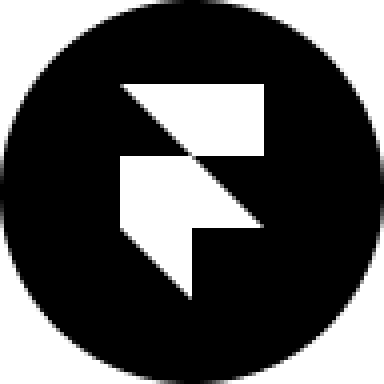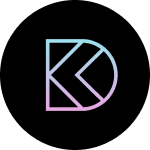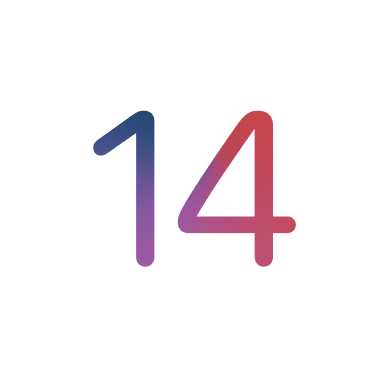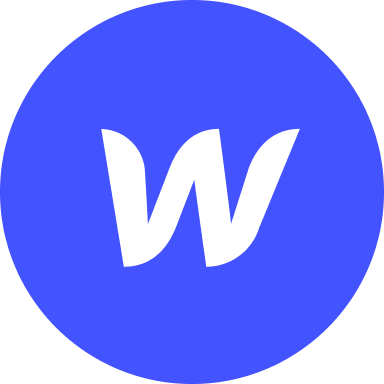Appear, Hover, Press, Loop and Drag Effects
Add to favorites
Mastering Framer Effects: Create interactive sites with Appear, Hover, Press, Loop, Drag Effects
Play video
Master No-Code Web Design with Framer
1
Complete Beginner-Friendly Framer Course
7:09
2
Create Your First Layout in Framer
13:47
3
Generate Layout with AI in Framer
7:26
4
Basic Layout and Interactive Elements
15:28
5
Text and Vector Animations
18:14
6
UI Design from Figma to Framer
13:16
7
Adaptive Layout with Stacks and Constraints in Framer
12:03
8
Responsive Layout with Breakpoints and Min Max
13:55
9
Button Components, Variables and Variants
11:01
10
Appear, Hover, Press, Loop and Drag Effects
11:17
11
Scroll Speed and Transform in Framer
15:15
12
Scroll Variants and Stick Element
12:13
13
Copy Components, Custom Cursors and 3D Embeds
10:00
14
Grid and Bento Layout
11:26
15
Icon Animation, Menu and Overlay
11:00
16
Code Components with Basic CSS
12:11
17
Property Controls in Framer
9:23
18
Code Overrides in Framer
13:23
19
CMS Collection Page and Detail
14:22
20
Search and Navigation
14:25
Framer Effects
When discussing Framer Effects and its capabilities for prototyping interactions and animations, several key effects come into play, including Appear, Hover, Press, Loop, Drag, Scroll Animation, Scroll Speed, Scroll Transform, and Scroll Variant.
- Appear: This effect is used to define how elements enter the viewport or become visible in the UI. Appear animations can be set to trigger when a component first loads or becomes visible on the screen, allowing for a smooth introduction of content. This can include fading in, sliding from a direction, or scaling up from a certain point.
- Hover: Hover effects are crucial for web and desktop applications, where a mouse pointer is used. It defines the interaction when a user places their cursor over an element without clicking. Hover effects can change the color, size, or appearance of buttons, links, or any interactive element, providing immediate visual feedback that an element is interactive.
- Press: Press effects are triggered when a user clicks or taps on an element. This can be used to simulate the tactile feedback of pressing a button, toggling a switch, or activating an interactive element. Press animations often involve changes in scale, color, or the addition of a ripple effect to signify an action has been taken.
- Loop: Loop effects are continuous animations that repeat indefinitely until stopped. They're useful for drawing attention to specific elements, such as animated icons, loading indicators, or background animations. Loop animations can be subtle, like a pulsing effect, or more complex, involving multiple animated properties.
- Drag: Drag effects allow elements to be moved around the screen through click-and-drag interactions. This is particularly useful for sliders, rearranging items in a list, or interactive elements in a game. The drag effect can include constraints on movement (such as locking to an axis) and feedback animations that respond to the drag action.
- Scroll Animation: Scroll animations are triggered by the user's scroll actions within a page or container. These animations can create parallax effects, reveal content dynamically, or animate properties of elements based on the scroll position. This effect enhances storytelling and engagement on a webpage or application.
- Scroll Speed: This defines how quickly elements respond or animate in relation to the user's scroll speed. Adjusting scroll speed can amplify or dampen the effect of scroll-based animations, allowing designers to fine-tune how interactive elements react to user input for a smoother or more dramatic effect.
- Scroll Transform: Scroll transform applies transformations to elements based on the scroll position. This can include scaling, rotating, skewing, or translating elements. Designers can create immersive, dynamic effects that change as the user scrolls through content.
- Scroll Variant: Scroll variants allow for different animation states based on scroll position. This can be used to switch between different styles, layouts, or visual states of an element as the user scrolls. It's a powerful tool for creating interactive, scroll-driven narratives or guides.
By leveraging these effects, designers can create high-fidelity prototypes that accurately simulate the look, feel, and functionality of the intended design, allowing for effective testing, feedback, and iteration during the design process.
Appear Effect Animation

The appear effect is used to determine how elements are introduced into the viewport or become visible in the user interface. It can be set to activate when a component is initially loaded or becomes visible on the screen, providing a seamless presentation of content. This can involve fading in, sliding in from a specific direction, or growing in size from a certain point.
- In the Layers List, open Stack and UI.
- Select all 8 elements and go to the Inspector to find Effects Appear.
- Click on Enter Effect.
- Set the Offset Y to 20.
- Click on Transition and set to Ease In Out, Time 1, Delay 0.1.
- While keeping the Transition window open, select the 8 elements individually one after another and change the Delay to +0.1. For example, Element 1: Delay 0.1, Element 2: Delay 0.2, etc.
Hover Effect Animation

Hover effects are important for web and desktop applications. They provide visual feedback when a user hovers their mouse over an element without clicking. These effects can change the color, size, or transformation of buttons, texts, or other interactive elements to show that they can be interacted with.
- In UI, select Score, Main Card, Progress Ring and Browse App.
- Go to Effects Hover.
- Set the Scale to 1.02, Offset Y -10.
- Set the Transition to Ease Bezier: 0.2, 0.8, 0.2, 1, Time 0.8.
- While keeping the Hover Effect window open, select just the Main Card and set the Fill to White 10%.
Press Effect Animation

Press effects are animations that occur when a user interacts with an element on a website or app. They imitate the feeling of pressing a physical button and can involve changes in size, color, or the appearance of a ripple effect.
- Select the Glass Button.
- Add a Press Effect Animation. The default is already fitting for a button press animation.
Loop Effect Animation

Loop effects are continuous animations that repeat until they are manually stopped. They are used to highlight certain elements and can be simple or complex in nature.
- Insert a Creative Element Arc.
- Width and Height to 136, Color White 20%, Font size 6, Inter Regular.
- Set text to "PERFORMANCE - PERFORMANCE - PERFORMANCE - PERFORMANCE - PERFORMANCE - PERFORMANCE - "
- Cut and Paste to the Score and set Constraints to 3 on all sides.
- Create Loop Effect.
- Set Linear Transition to Time 60 seconds.
Drag Effect Animation

Drag effects enable elements to be moved through click-and-drag interactions. They are valuable for various purposes like sliders, rearranging items, and interactive elements in games. These effects can include movement restrictions and animated feedback in response to dragging.
- Select the two Ticket inside the Main Card.
- Create an Effects Drag.
- Select Cards, Video and Main Card and set the Overflow to Visible.
Conclusion
In conclusion, Framer Effects offer a wide range of capabilities to enhance the interactivity and visual appeal of prototypes. By mastering effects such as Appear, Hover, Press, Loop, Drag, Scroll Animation, Scroll Speed, Scroll Transform, and Scroll Variant, designers can create engaging and dynamic user experiences. With the step-by-step instructions provided in this tutorial, designers can easily implement these effects to create high-fidelity prototypes that accurately simulate the intended design. Experiment with these effects to enhance your prototypes and bring your designs to life!
Templates and source code
Download source files
Download the videos and assets to refer and learn offline without interuption.
Design template
Source code for all sections
Video files, ePub and subtitles
Assets
Videos
1
Complete Beginner-Friendly Framer Course
4-hour free course to create beautiful, modern interfaces. Dark mode and glass designs, from Figma to Framer, using stack and grid layouts
7:09
2
Create Your First Layout in Framer
Master the basics of layout creation in Framer with this comprehensive step-by-step guide for beginners. Start building your designs today!
13:47
3
Generate Layout with AI in Framer
Create stunning websites with ease using Framer's AI-powered layout generator
7:26
4
Basic Layout and Interactive Elements
Learn how to create a user-friendly layout with interactive elements to enhance the user experience and engagement on your website or app
15:28
5
Text and Vector Animations
Transform your content with captivating text and vector animations
18:14
6
UI Design from Figma to Framer
Mastering the art of transitioning your UI design projects seamlessly from Figma to Framer with expert tips and techniques
13:16
7
Adaptive Layout with Stacks and Constraints in Framer
Create responsive designs easily using stacks and constraints in Framer. Perfect for adaptive layouts for web and mobile projects
12:03
8
Responsive Layout with Breakpoints and Min Max
Create a user-friendly website with responsive design, incorporating breakpoints and min-max values to ensure optimal display on all devices
13:55
9
Button Components, Variables and Variants
Explore different button components, variables, and variants to enhance the functionality and aesthetics of your projects
11:01
10
Appear, Hover, Press, Loop and Drag Effects
Mastering Framer Effects: Create interactive sites with Appear, Hover, Press, Loop, Drag Effects
11:17
11
Scroll Speed and Transform in Framer
Learn how to create dynamic Framer sites with advanced features for interactive designs
15:15
12
Scroll Variants and Stick Element
Enhance User Navigation with Sticky Elements and Scroll Variants in Framer
12:13
13
Copy Components, Custom Cursors and 3D Embeds
Learn how to incorporate Framer's interactive elements into your designs
10:00
14
Grid and Bento Layout
Enhancing Your Designs with Grid and Bento Layouts in Framer
11:26
15
Icon Animation, Menu and Overlay
Web Design User Experience with Icon Animation, Menus, and Overlays in Framer
11:00
16
Code Components with Basic CSS
Create Basic Code Components with CSS in Framer
12:11
17
Property Controls in Framer
Mastering Property Controls for Interactive Framer Components
9:23
18
Code Overrides in Framer
Enhancing Your Framer Elements with Code Overrides
13:23
19
CMS Collection Page and Detail
Integrating Figma Designs with Framer and CMS
14:22
20
Search and Navigation
Enhancing User Experience: Search, Navigation, and Footer Integration
14:25
Meet the instructor
We all try to be consistent with our way of teaching step-by-step, providing source files and prioritizing design in our courses.
Meng To
I design, code and write
Meng To is the author of Design+Code. Meng started off his career as a self-taught designer from Montreal and eventually traveled around the world for 2 years as his US VISA was denied. During his travels, he wrote a book which now has 35,000 readers.
40 courses - 189 hours

Master AI Prompting for Stunning UI
Learn how to leverage AI tools like Aura for creating beautiful designs, working with templates, and experimenting with advanced prompts. A concise guide for designers and developers to level up their skills.
5 hrs

Build SwiftUI apps for iOS 18 with Cursor and Xcode
In this course, we'll explore the exciting new features of SwiftUI 6 and Xcode 16 for building iOS 18 apps. From mesh gradients and text animations to ripple effects, you'll learn how to create polished, highly custom apps using the latest workflows. We'll also dive into using Cursor and Claude AI for AI-driven coding, helping you start strong and customize your apps.
5 hrs

Create your Dream Apps with Cursor and Claude AI
Learn to build your dream web apps from the ground up using Cursor, Claude AI, and a suite of powerful AI tools. This course covers everything you need, including React for frontend development, Firebase for backend integration, and Stripe for handling payments. You’ll also dive into advanced AI tools like Claude Artifacts, Galileo AI, v0.dev for UI, Ideogram for design generation, and Cursor Composer for full-scale development.
6 hrs

Build a React Site from Figma to Codux
In this course, you'll learn to build a website from scratch using Codux, starting with a Figma template. You’ll master responsive design, collaborate with developers on a real React project, export CSS from Figma using Locofy, set up breakpoints with media queries, add CSS animations, improve SEO, create multiple pages with React Router, and publish your site. By following best practices, you’ll bridge design and development, improve your web design skills.
2 hrs

Create 3D UI for iOS and visionOS in Spline
Comprehensive 3D Design Course: From Basics to Advanced Techniques for iOS and visionOS using SwiftUI
3 hrs

Master No-Code Web Design with Framer
In this free Framer course, you'll learn to create modern, user-friendly interfaces. Start with dark mode and glass designs, then move from Figma to Framer, using vectors and auto layout for responsive websites. Add animations, interactive buttons, and custom components with code. Finally, you'll craft a design system suitable for teamwork or solo projects, all in a straightforward and practical approach.
4 hrs

Build SwiftUI Apps for iOS 17
In this course, we’ll be exploring the fresh and exciting features of SwiftUI 5! As we craft a variety of iOS apps from the ground up, we'll delve deep into the treasure trove that is SwiftUI's user interface, interactions, and animations.
4 hrs

Build Beautiful Apps with GPT-4 and Midjourney
Design and develop apps using GPT-4 and Midjourney with prompts for SwiftUI, React, CSS, app concepts, icons, and copywriting
4 hrs

Build SwiftUI apps for iOS 16
Create animated and interactive apps using new iOS 16 techniques using SwiftUI 4 and Xcode 14
5 hrs

Build a 3D Site Without Code with Framer
Design and publish a responsive site with 3D animation without writing a single line of code
3 hrs

Create 3D Site with Spline and React
Design and code a landing page with an interactive 3D asset using Spline and CodeSandbox
1 hrs

Build an Animated App with Rive and SwiftUI
Design and code an iOS app with Rive animated assets, icon animations, custom layouts and interactions
3 hrs

Build a SwiftUI app for iOS 15 Part 3
Design and code a SwiftUI 3 app with custom layouts, animations and gestures using Xcode 13, SF Symbols 3, Canvas, Concurrency, Searchable and a whole lot more
4 hrs

Build a SwiftUI app for iOS 15 Part 2
Design and code a SwiftUI 3 app with custom layouts, animations and gestures using Xcode 13, SF Symbols 3, Canvas, Concurrency, Searchable and a whole lot more
3 hrs

Build a SwiftUI app for iOS 15
Design and code a SwiftUI 3 app with custom layouts, animations and gestures using Xcode 13, SF Symbols 3, Canvas, Concurrency, Searchable and a whole lot more
4 hrs

React Livestreams
Learn how we can use React Hooks to build web apps using libraries, tools, apis and frameworks
4 hrs

Design Founder Livestreams
A journey on how we built DesignCode covering product design, management, analytics, revenue and a good dose of learning from our successes and failures
2 hrs

SwiftUI Advanced Handbook
An extensive series of tutorials covering advanced topics related to SwiftUI, with a main focus on backend and logic to take your SwiftUI skills to the next level
4 hrs

iOS Design Handbook
A complete guide to designing for iOS 14 with videos, examples and design files
2 hrs

SwiftUI Handbook
A comprehensive series of tutorials covering Xcode, SwiftUI and all the layout and development techniques
7 hrs

Build a web app with React Hooks
Learn how we built the new Design+Code site with React Hooks using Gatsby, Netlify, and advanced CSS techniques with Styled Components.
4 hrs

UI Design Handbook
A comprehensive guide to the best tips and tricks for UI design. Free tutorials for learning user interface design.
2 hrs

Figma Handbook
A comprehensive guide to the best tips and tricks in Figma. Not affiliated with or endorsed by Figma, Inc.
6 hrs

SwiftUI for iOS 14
Build a multi-platform app from scratch using the new techniques in iOS 14. We'll use the Sidebar and Lazy Grids to make the layout adaptive for iOS, iPadOS, macOS Big Sur and we'll learn the new Matched Geometry Effect to create beautiful transitions between screens without the complexity. This course is beginner-friendly and is taught step-by-step in a video format.
3 hrs

SwiftUI Livestreams
This is a compilation of the SwiftUI live streams hosted by Meng. Over there he talks and teaches how to use design systems, typography, navigation, iOS 14 Design, prototyping, animation and Developer Handoff.
19 hrs

UI Design Livestreams
This is a compilation of the UI live streams hosted by Meng. Over there he talks and teaches how to use design systems, typography, navigation, iOS 14 Design, prototyping, animation and Developer Handoff.
26 hrs

UI Design for Developers
In this course we'll learn how to use design systems, set up break points, typography, spacing, navigation, size rules for adapting to the iPad, mobile and web versions, and different techniques that translate well from design to code.
3 hrs

Build an app with SwiftUI Part 3
This course was written for designers and developers who are passionate about design and about building real apps for iOS, iPadOS, macOS, tvOS and watchOS. SwiftUI works across all of those platforms. While the code is not a one-size-fits-all, the controls and techniques involved can apply to all platforms. It is beginner-friendly, but it is also packed with design tricks and cool workflows about building the best UIs and interactions.
4 hrs

Build an app with SwiftUI Part 2
This course was written for designers and developers who are passionate about design and about building real apps for iOS, iPadOS, macOS, tvOS and watchOS. SwiftUI works across all of those platforms. While the code is not a one-size-fits-all, the controls and techniques involved can apply to all platforms. It is beginner-friendly, but it is also packed with design tricks and cool workflows about building the best UIs and interactions.
4 hrs

Build a full site in Webflow
Webflow is a design tool that can build production-ready experiences without code. You can implement CSS-driven adaptive layouts, build complex interactions and deploy all in one tool. Webflow also comes with a built-in content management system (CMS) and Ecommerce for creating a purchase experience without the need of third-party tools.
3 hrs

Advanced Prototyping in ProtoPie
ProtoPie is a cross-platform prototyping tool that creates prototypes nearly as powerful as those made with code, with half of the efforts, and zero code. It's perfect for designers who want to quickly experiment with advanced interactions using variables, conditions, sensors and more.
3 hrs

Build an app with SwiftUI Part 1
This course was written for designers and developers who are passionate about design and about building real apps for iOS, iPadOS, macOS, tvOS and watchOS. SwiftUI works across all of those platforms. While the code is not a one-size-fits-all, the controls and techniques involved can apply to all platforms. It is beginner-friendly, but it is also packed with design tricks and cool workflows about building the best UIs and interactions.
4 hrs

React Native for Designers Part 2
React Native is a popular Javascript framework that builds on top of React by using native components to create a real mobile app indistinguishable from one made using Xcode or Android Studio. The main difference with native development is that you get to use CSS, hot-reload, Javascript and other familiar techniques that the Web has grown over the past decades. Most importantly, you're building for both iOS and Android using the same codebase.
3 hrs

React Native for Designers
React Native is a popular Javascript framework that builds on top of React by using native components to create a real mobile app indistinguishable from one made using Xcode or Android Studio. The main difference with native development is that you get to use CSS, hot-reload, Javascript and other familiar techniques that the Web has grown over the past decades. Most importantly, you're building for both iOS and Android using the same codebase.
5 hrs

Design System in Figma
Learn how to use and design a collaborative and powerful design system in Figma. Design Systems provide a shared library of reusable components and guidelines and that will let you build products much faster
3 hrs

React for Designers
Learn how to build a modern site using React and the most efficient libraries to get your site/product online. Get familiar with Grid CSS, animations, interactions, dynamic data with Contentful and deploying your site with Netlify.
3 hrs

Swift Advanced
Learn Swift a robust and intuitive programming language created by Apple for building apps for iOS, Mac, Apple TV and Apple Watch
9 hrs

Learn Swift
Learn Swift a robust and intuitive programming language created by Apple for building apps for iOS, Mac, Apple TV and Apple Watch
4 hrs

Learn Sketch
Learn Sketch a design tool entirely vector-based and focused on user interface design
5 hrs

Learn iOS 11 Design
Learn colors, typography and layout for iOS 8
1 hrs
